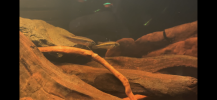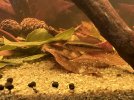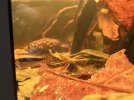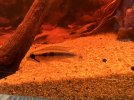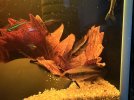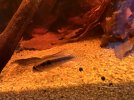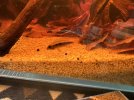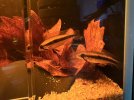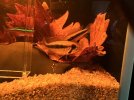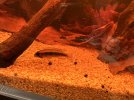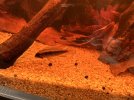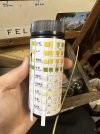r9inthehouse
New Member
- Messages
- 12
Hi everyone!
I have bought a “pair” of Apistogramma Elizabethae last week and it was very tough to select a pair from the lot as most of them were too young to distinguish be appearance. With the aid of the shop owner I managed to pick a definite male (around 3cm I think?) whose 3rd dorsal fin was noticeably longer than others. While picking a female was a much tougher mission, I eventually picked a slightly larger fish with smooth dorsal fins and rounder body.
In the first few days, the male was doing better in settling in and was chasing the “female” around. However after almost a week, things changed and the “female” has turned more aggressive and managed to claim the area around the clay pot and would evict the male when he comes close.
Here is the tricky part, today I put a mirror on the side of the tank where they were at and the “female” flared to the reflection (not the first time) while the male showed no interest and kept on searching for food. I tried searching on the internet on female Apistogramma flaring at mirror but in vain.
I am totally aware of the existence of “sneaker male” but I’m really interested to know whether it is normal for females to flare at reflections, if not, I wonder why isn’t it one of the ways to sex them? Could anyone let me know whether it is normal for Apistogramma females to react to their reflections please? Many thanks in advance!
I have bought a “pair” of Apistogramma Elizabethae last week and it was very tough to select a pair from the lot as most of them were too young to distinguish be appearance. With the aid of the shop owner I managed to pick a definite male (around 3cm I think?) whose 3rd dorsal fin was noticeably longer than others. While picking a female was a much tougher mission, I eventually picked a slightly larger fish with smooth dorsal fins and rounder body.
In the first few days, the male was doing better in settling in and was chasing the “female” around. However after almost a week, things changed and the “female” has turned more aggressive and managed to claim the area around the clay pot and would evict the male when he comes close.
Here is the tricky part, today I put a mirror on the side of the tank where they were at and the “female” flared to the reflection (not the first time) while the male showed no interest and kept on searching for food. I tried searching on the internet on female Apistogramma flaring at mirror but in vain.
I am totally aware of the existence of “sneaker male” but I’m really interested to know whether it is normal for females to flare at reflections, if not, I wonder why isn’t it one of the ways to sex them? Could anyone let me know whether it is normal for Apistogramma females to react to their reflections please? Many thanks in advance!
